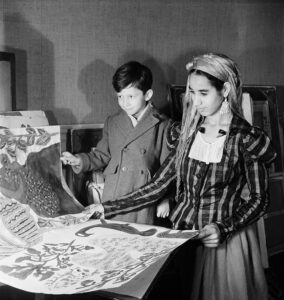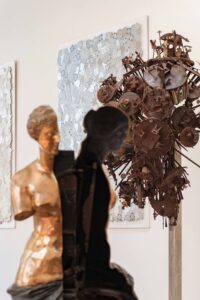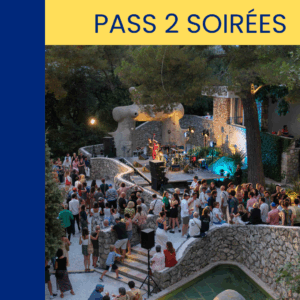
Le Nœud rouge
In 1933, the Bauhaus was shut down by the Nazis. Kandinsky took refuge in Paris, where he was practically unknown. In 1937, the Musée des Écoles Étrangères, at the time housed in the Jeu de Paume, nevertheless purchased a gouache of his, painted the previous year. That purchase, which coincided with the Nazis’ “Degenerate Art” exhibition in Munich, gave Kandinsky confidence. The works from this Parisian period, including Red Knot, from 1936, are dominated by curved lines, marked references to the world of biology and scientific plates analysing amoebas, larvae and other marine invertebrates.
Wassily Kandinsky (1866-1944)
A pioneer of abstract art, the international Russian artist Wassily Kandinsky lived a number of years in Paris and travelled around Europe. He came to the fore with his theoretical essay Concerning the Spiritual in Art (1911). This major artist, a member of the Bauhaus and founder of Der Blaue Reiter, marked a decisive turning-point in the birth of abstraction.



